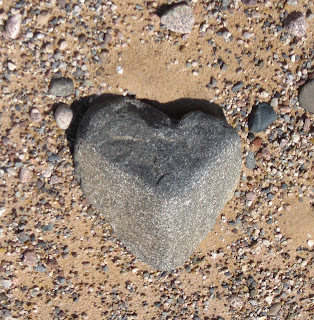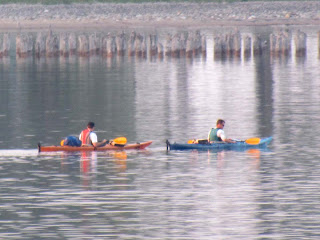Our Grand Marais group is continuing our golf outtings again this summer. Most weeks we have around eight of us drive the 50 miles over to Newberry. As busy as I am this summer, I am going to try to make the time each week, other than in July when my friend who is helping me at the museum this summer (Jill) will be gone for 2-3 weeks. For a U.P. golf course, I really like the Newberry course a lot. My goal this summer is to improve my game so that I either break the score of 50 in 9 holes, or 100 on 18. We couldn't play our usual Friday last week because of rain, so we played on Monday instead. I didn't do well with my chip shots around the green - this is something I have to practice - but I shot a 106. It will take a round with just a few less missed shots for me to reach my goal.
Here are some photos taken from around the course as well as some of Tom, Mike, and Mike who I played with this week.
I received an email recently from a rockhound who saw in Google Images the iris agate photos I previously posted on the blog.
I started checking out some of the other iris agate photos there and came across this article called "Iris Agate" published in the American Mineralogist journal (Volume 37, pages 578-587, 1952). The article was published by Francis T. Jones. I was surprised that despite the early date of the article, they still had some great microscopic photos of agate banding.
Iris agates cut into thin slabs shows spectral colors when viewed in transmitted light. In order to produce the best play of colors the slice of iris agate must he cut so that the thin layers, whose edges are the lines of the diffraction grating, as shown in Figs. 1 to 5, will be at. right angles to the polished surface. The slice will show the brightest colors if it is thin (1 mm. or less) because the absorbing and scattering effect of any milkiness will then be at a minimum. If the line spacing is uniform, as in Fig. 1, a very thin slice will show primary colors even if the layers in the agate are somewhat inclined to the polished or lacquered surface, although the slice may have to be tilted to correct for the inclination. A specimen which shows primary colors in very thin section may show only pastel colors if it is cut too thick. If the line spacing is not quite uniform only pastel colors may be seen, and if it is very irregular only a chatoyance will be observed.
On the basis of the evidence given the author concluded that: (1) The iris agate grating structure results from the segregation of alternate layers having higher and lower refractive indices during crystallization of the fibers of chalcedony microcrystals. (2) The crystallization is a rhythmic process affecting the entire aggregate of crystals uniformly. (3) Factors such as variations in rate of growth and percentage of impurity, such as opal, probably cause the difference of fineness in the different grating bands of a specimen.
FIG. 1. Iris agate 9,600 lines to the inch. 370X.
FIG. 2. Iris agate with only 400 bands per inch. 80X.
FIG. 3. Iris agate showing spacing differences and change of direction at grain boundary. 80X.
Figure 3 shows a relatively coarse structure of varying fineness and also reveals that the banding is continuous across adjacent groups of crystals in spite of abrupt changes in direction.
FIG. 5. A. Iris agate showing start of narrow band where crystal size changes.. 200X.

















































